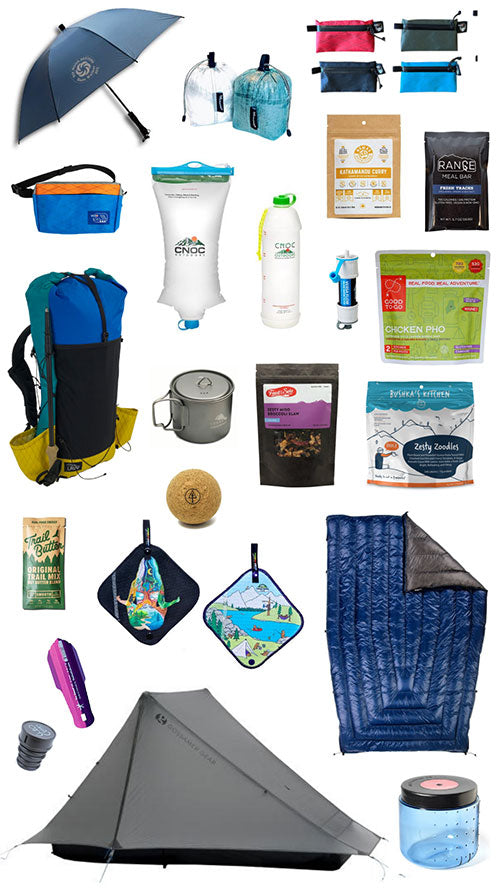
Does trudging up a steep frozen trail at 1 mile per hour in sub-zero temperatures — taking off jackets and putting them back on again, while eating half-frozen protein bars — sound like your perfect winter day? Then chances are, you might enjoy winter hiking, available now at a trailhead near you. Whether it’s your first hike or your fifty-first, use this checklist to make sure you have all the gear you need for your next winter adventure.
Gear
Your gear will depend on conditions, which can vary greatly depending on elevation, time of year, weather and more. Ranging from deep powder snow to thick ice, winter hiking conditions can even change from day-to-day on the same trail.
Do your research beforehand so you know what to expect. A good practice is picking up the phone (yes, a phone call!) and calling the local trail organization to get the most up-to-date trail conditions. Example: Headed up Mt Washington? Call the AMC Pinkham Notch Visitor Center.
While you likely won’t need all of this gear at the same time, on the same trip, it’s worth carefully considering whether or not you need each of these gear items before heading out on a winter adventure.
- Backpack: 35-60L
- Snowshoes
- Traction: Microspikes or trail crampons, depending on conditions
- Trekking poles with snow baskets
- Ice ax or ice tool, if needed
- Ski goggles or polarized sunglasses
- Waterproof gaiters: Good for keeping snow out of your boots, protecting your pants from your crampons, and generally keeping your feet warmer. The Armadillo LT™ Gaiter by Hillsound is a solid choice.
- Avalanche shovel, probe, and beacon, if in hazardous terrain, with knowledge of how to use them (it’s important to be aware of not just a slope that you’re on, but also any slopes that might be above you).
Clothing
Leave the cotton at home. Cotton dries slowly and is a poor insulator when wet. Instead, opt for quick drying fabrics that retain warmth when saturated, like wool or polyester. Dress in layers to manage your core temperature and keep moisture to a minimum. Carry an extra set of socks, gloves, base layers and a warm hat to swap out if the item you’re wearing gets soaked through. Sweat is not your friend in winter.
- Top and bottom base layers
- Fleece or other breathable midlayer: The FarPointe Alpha Cruiser and the SkyGoat Fleece Jacket are both popular choices in this category.
- Soft or Hardshell pants
- Waterproof shell
- Down or synthetic puffy jacket: synthetic will keep you warm even when wet, whereas down needs to be kept dry to retain its insulating properties, but is lighter weight. A good synthetic option is the Torrid APEX Jacket by Enlightened Equipment, while a good down option is the Katabatic Gear Tincup Jacket.
- Two pairs of liner gloves: one on your hands, one in your pack
- Mittens or gloves
- Warm hat
- Neck Gaiter or balaclava: depending on conditions above treeline
- Two pairs of socks: one on your feet, one in your pack, such as Darn Tough socks
- Insulated hiking boots: 200-400g of insulation is best
Ten+ Essentials
The ten essentials are ten systems of gear to make sure an outdoors-human is as prepared as possible for an emergency in the backcountry. Some items you won’t use, but if you need them, there is no substitute. The cold makes winter emergencies severe, so be prepared in case you have to spend extra hours in the elements. This list is extended to make sure you have all the little things that keep your systems running smoothly in below freezing temperatures. If you’re hiking in a group, some of these items can be divided among group members.
- Map and compass
- Waterproof matches and lighter
- Emergency shelter: an emergency bivy or tarp
- A stove and pot: white gas stoves work best in temperatures below 20 degrees Fahrenheit.
- Sleeping bag or quilt: rated to at least 20
- Pocket knife
- Repair kit: including a sewing kit, paracord, duct tape, gear patches, and zip ties, which are great for quick and easy repairs to snowshoes or microspikes.
- Sunscreen and lip balm
- First aid kit
- Loud whistle
- Headlamp: with extra batteries, the NU25 by Nitecore is a standard.
- Bathroom kit: Trowel, TP, hand sanitizer, pee rag, and WagBag, if required.
- Extra food: high-calorie bars and snacks, gels, bagels, candy, etc.
- Two wide-mouth Nalgene water bottles, covered with an insulated water bottle sleeve, or a wool sock, to keep from freezing. Avoid water bladders and narrow-mouthed bottles, as these can freeze easily.
- Insulated metal bottle or small thermos, filled with your favorite warm beverage.
- Powerbank for keeping phone and gps charged. This one from Nitecore is a fan favorite.
- Hand and toe warmers
- GPS communicator or personal beacon: optional, a great investment
Celia is a thru hiker, writer and illustrator. Find her on Instagram @celiafromwork

















1 comment
Danno
I also recommend colorful cords or lanyards on items that may get dropped in the snow (I e., pocket knife, compass, whistle, etc.) A couple of food items that are good in the cold include Cosmic brownies (Little Debbie) and instant jello with hot water. The brownies sray soft well below freezing and the hot sugary drink warms while giving a boost of energy.